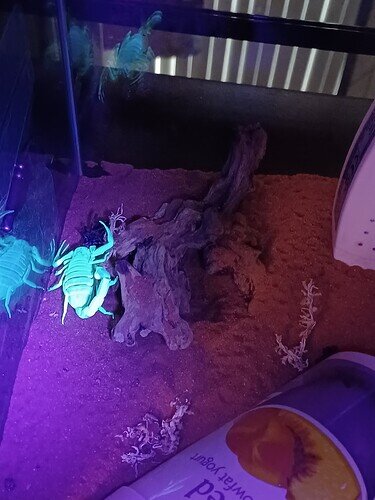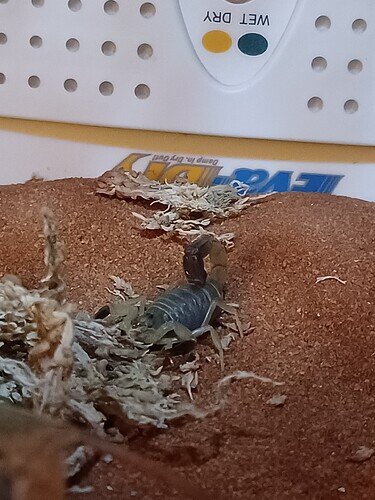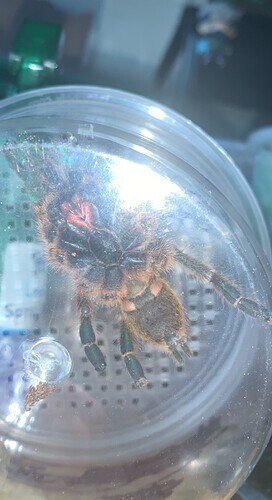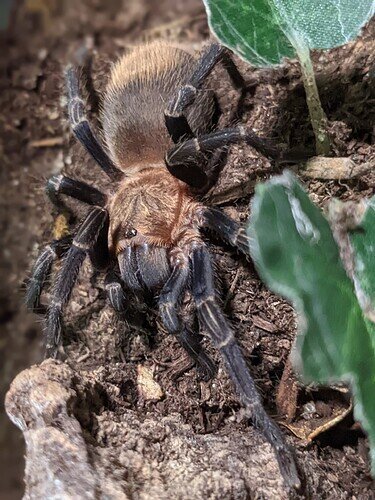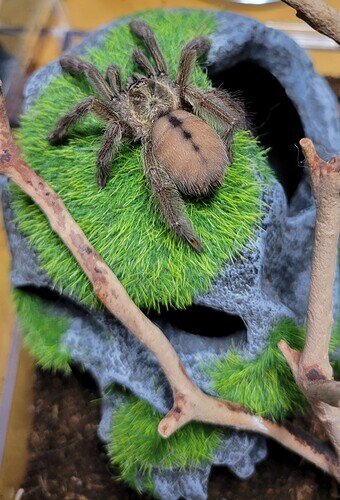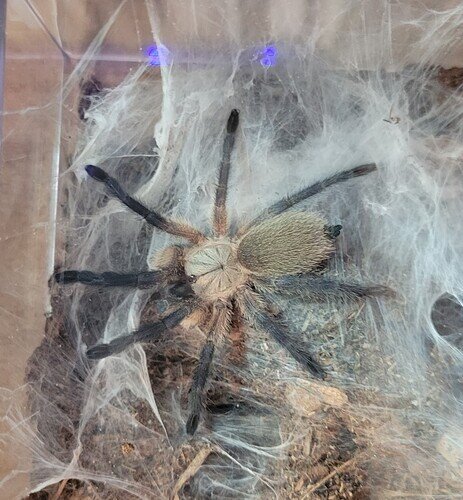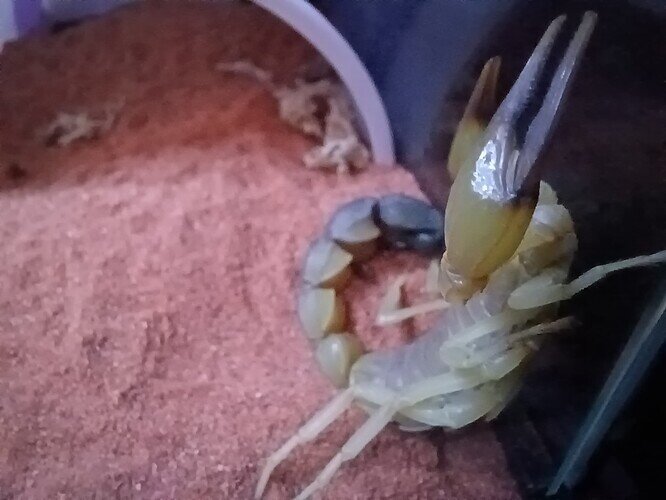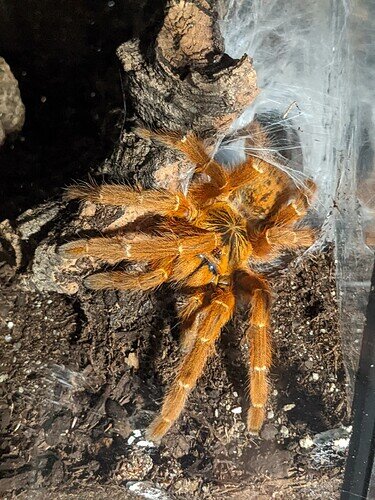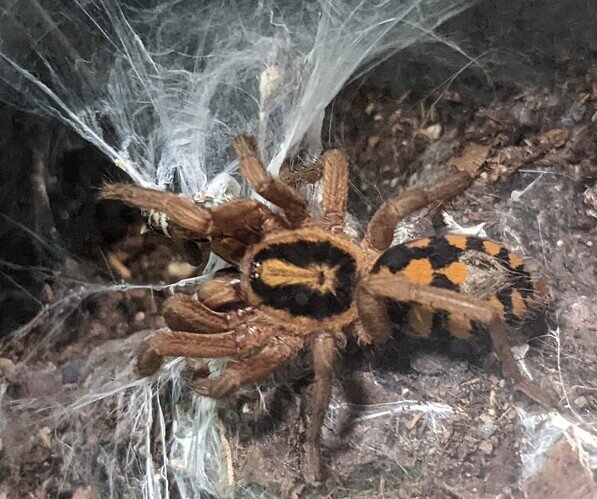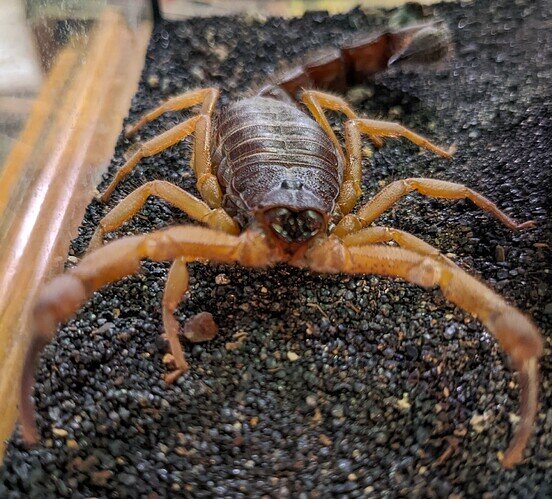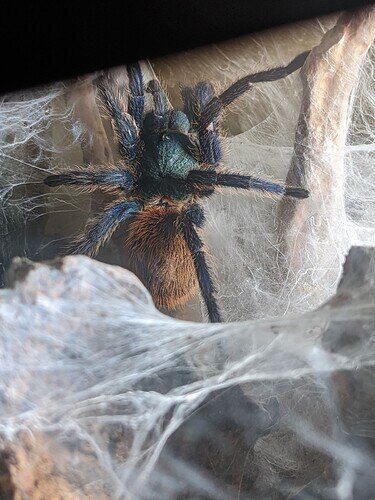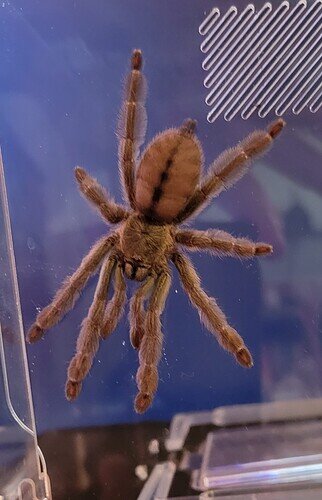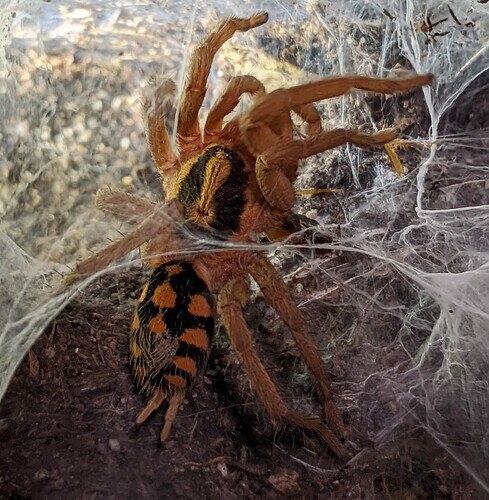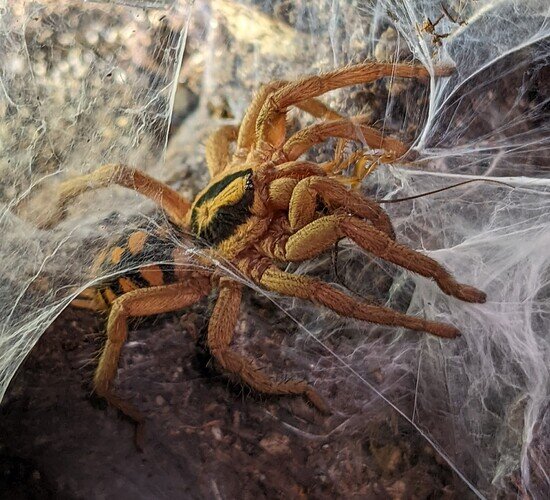A nightime hunt with my deathstalker and a new pic of my newest baby androctonus australis hector
Definitely plan on loading up on scorpions in thenear future. Just need to rearrange the collection of everything else and get some secure enclosures for them. With a 5 yo running around they have to be secure.
Yes they are rewarding and easy to care for but safety is always 1st. That includes secure enclosures with locks if you have children or roommates, always using proper procedures around them and interacting with them. Some people like the double layer protection (i dont utilize that, but do plan on stronger enclosures in the future) with children id definitely think about the double layer. I would recommend a top opening rather than side open as the side opening would make it possible for escape when you open it. I have seen people use shoebox totes inside of side opening enclosures that lock. Im sure you may know about the scorpions but im always here to help.
I love this spider! It is so beautiful!
I plan on getting a couple more of them and keeping them communally.
Just a close up of my Androctonus Australis female hanging out. I really love my danger lobsters.
Did you know that scorpions not only are arachnids but they are also related to lobsters. They haven’t changed in millions of years. Scorpions have become extremely adapted and now can be found on every continent exceot Antarctica. These very adapable creatures have also adapted to city life. Many animal species are attracted to human settlements because the waste we make attracts an abundance of insects and rats and mice etc.
In brazil for example they inhabit homes, trash dumps and even sewers. To make matters worse is that the most common species ( also potentially the most dangerous) Tityus stigmurus AKA Brazilian yellow is also partheneogenic so its growth is really explosive.
Not really a tarantula or invert picture, because I never really see this one. This is my T. rasti enclosure. I know its still alive and kicking because the crickets disappear and more webbing appears.
Great pictures @wrai!!
